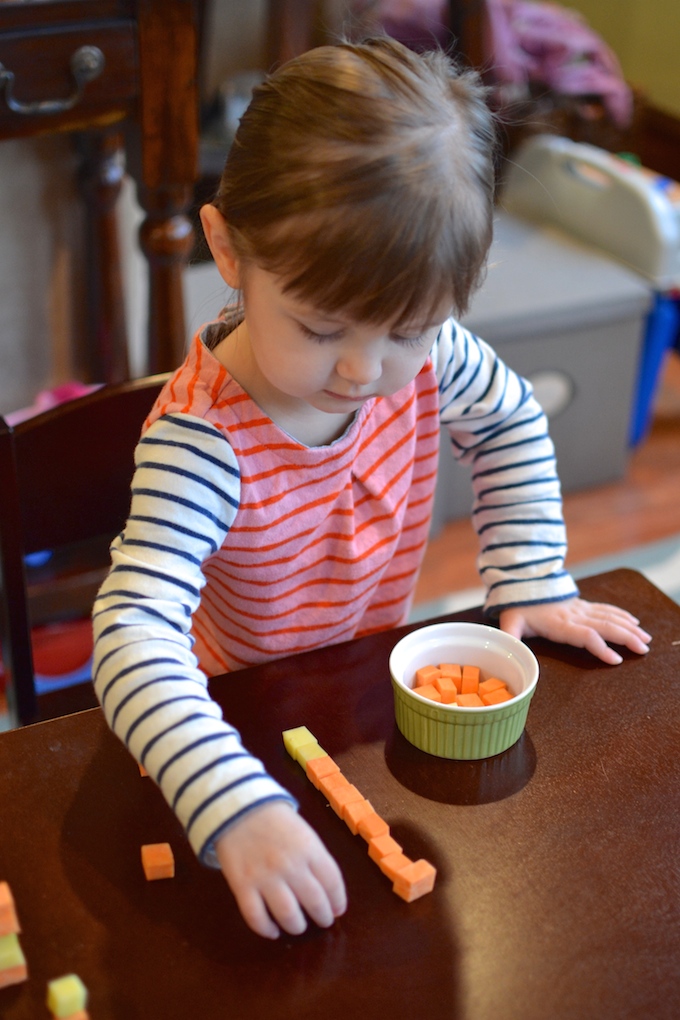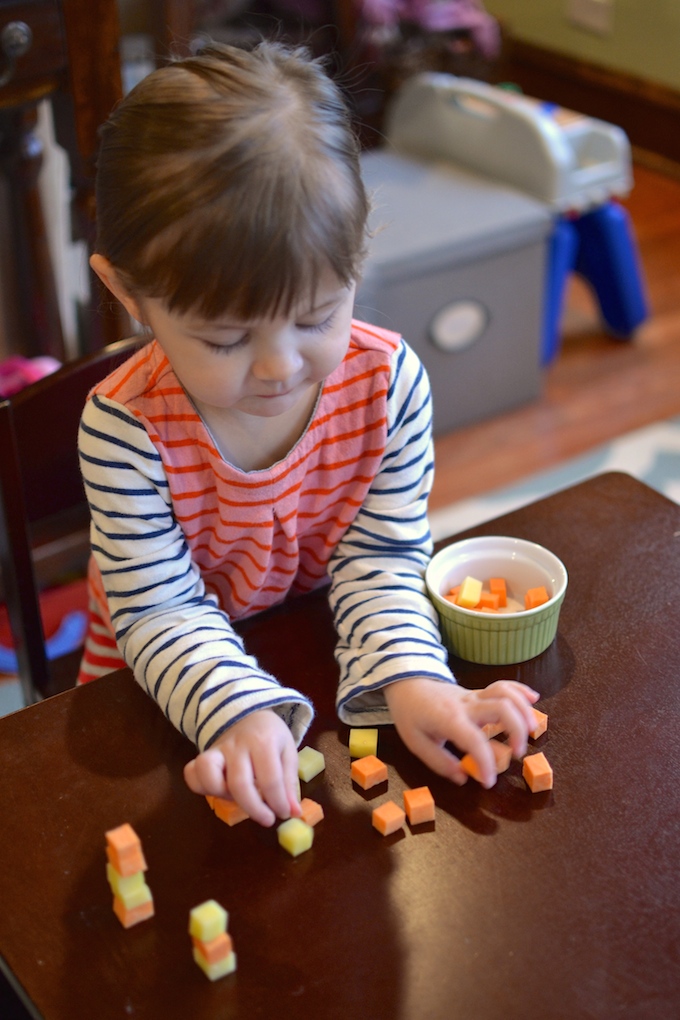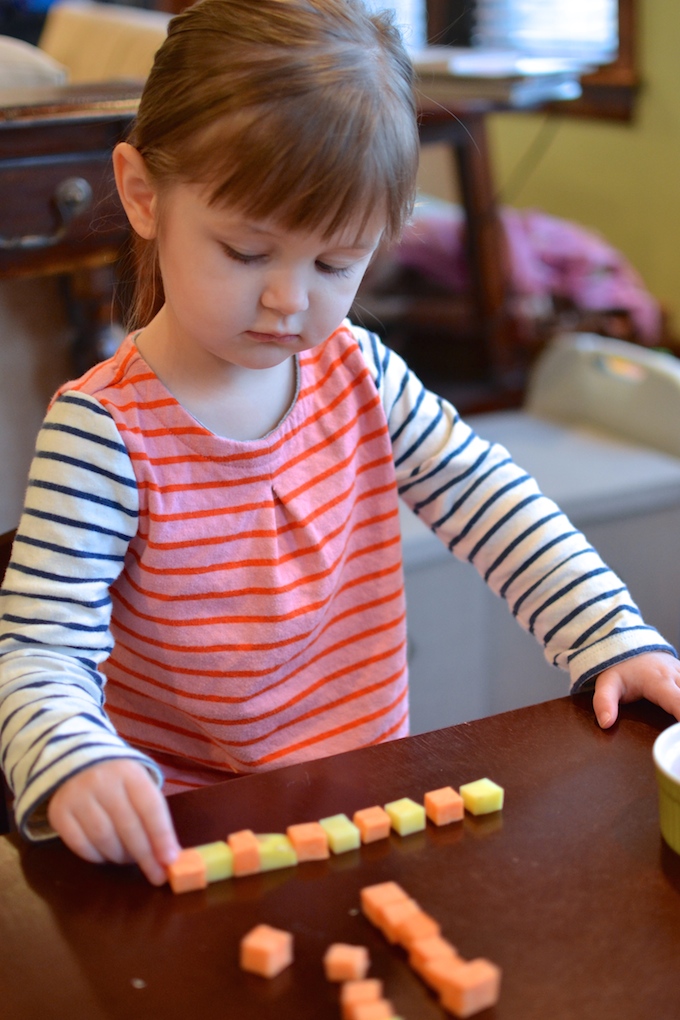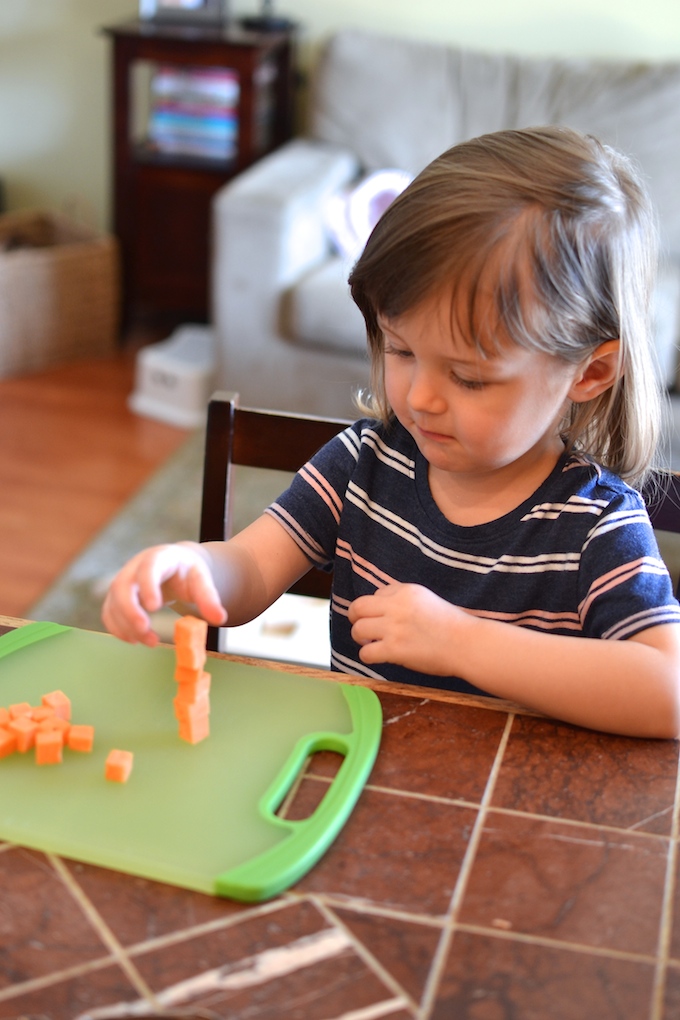Our Vegetarian Chili Verde is chock full of sweet potato and gold potato cubes that remind me of the base-ten blocks that are used in classrooms to teach place value…so with this recipe, we’re working with potato “base-ten” cubes to learn just that! (…and maybe build some potato block towers too).

Having a sense of how numbers work is at the core of problem solving in math. Studies show that having a strong sense of numbers early on is a powerful predictor of math achievement in subsequent years. Therefore, in Kindergarten, kids start learning the basics of place value. The Common Core Standards (adopted by 42 states and the District of Columbia) state that in Kindergarten, kids are expected to understand that the numbers 11 through 19 “are composed of ten ones and one, two, three, four, five, six, seven, eight, or nine ones.” In other words, they need to start understanding the number sense behind groups of ten…the base-ten system.

Base ten blocks (or our potato cubes in this case!) serve as a hands-on, visual way to experience counting and grouping numbers. Grab a handful of sweet potato or gold potato cubes for your child to play with, before throwing the rest into your chili. Here are some ideas for exploring place value that you can try depending on your child’s age, experience and ability…
- Use the potato cubes to practice one-to-one correspondence with counting. Move one cube and count “one.” Move another cube and count “two.” See if your child can count to five or ten, or even higher. This activity serves to reinforce the idea that each cube is “one.”
- As your child counts, encourage him or her to gather the potato cubes into a group of ten. I showed Em how to line them up in a column (similar to what a “rod” or a “long” base-ten block looks like). Name that group as “ten.” You could even use toothpicks to hold the ten ones together to make a “rod.”
- Say a number (from 0-10) out loud and challenge your child to build it using potato cubes
- Write a number (from 0-10), to introduce the symbols we use to show numbers, and challenge your child to build it using potato cubes
- Demonstrate how to build a number greater than 10, such as 12, using your “ten” and two “ones.” Count the group of cubes as “10” and then count up as you touch each cube “11”, “12”. “12” is a group of ten and two more ones.
- Say a number (from 11-19) out loud and challenge your child to build it using a “ten” and “ones”
- Write a number (from 11-19), to introduce the symbols we use to show numbers, and challenge your child to build it using a “ten” and “ones”
- Use the sweet potato and gold potato cubes to build different patterns

Your child may be able to tackle all of the above ideas, or maybe only one. It’s all okay! Wherever your child takes this activity is what is right for him/her at that time. Kids just NEED opportunities to experience, touch, manipulate, move and make connections with numbers. For more activities exploring base-ten, check out About Education or k5Chalkbox.
And don’t forget those little potato cubes can also double as building blocks! See who can build the tallest tower, or make the longest snake (good fine motor practice too)!

Disclaimer: As with all of our activities, my suggestions for how kids can get involved are based on what has worked in our home. Your child may be able to do more or less based on their age and/or ability. As always, make sure you are properly supervising and engaging with kids that are participating in learning activities.
 Carol says
Carol says
April 7, 2016 at 8:29 AMLove it! What a fantastic way to introduce tens and ones! Great post!
 Sally says
Sally says
April 7, 2016 at 8:58 PMThank you, Carol!
 Samantha says
Samantha says
April 7, 2016 at 1:21 PMThis is seriously brilliant! Using potato cubes and counting blocks is such a great idea! Love it!
 Sally says
Sally says
April 7, 2016 at 8:58 PMThanks, Sam! I was cutting them up and thought, “Base ten blocks!”
 Bella says
Bella says
April 7, 2016 at 9:17 PMGreat lesson but all I can look at is that adorable little face ?
 Sally says
Sally says
April 11, 2016 at 9:46 PMShe’s the best 🙂
 Mary P. Stoltenberg says
Mary P. Stoltenberg says
April 7, 2016 at 9:35 PMWhat a great hands on, creative learning activity. Emme sure is a lucky little girl.
 Sally says
Sally says
April 11, 2016 at 9:47 PMThank you, Mary!